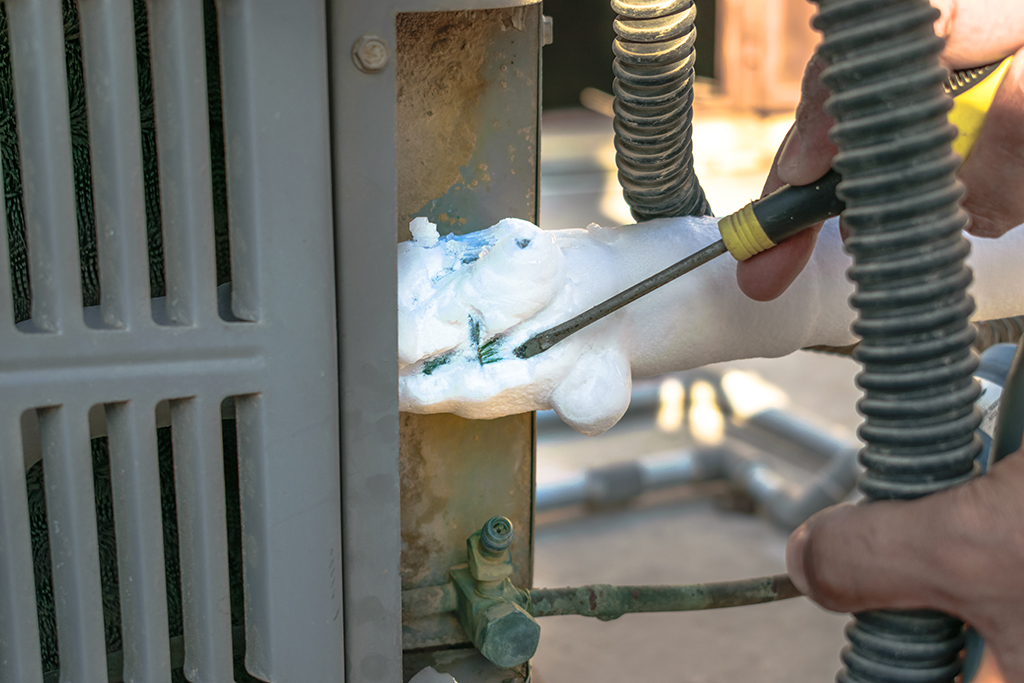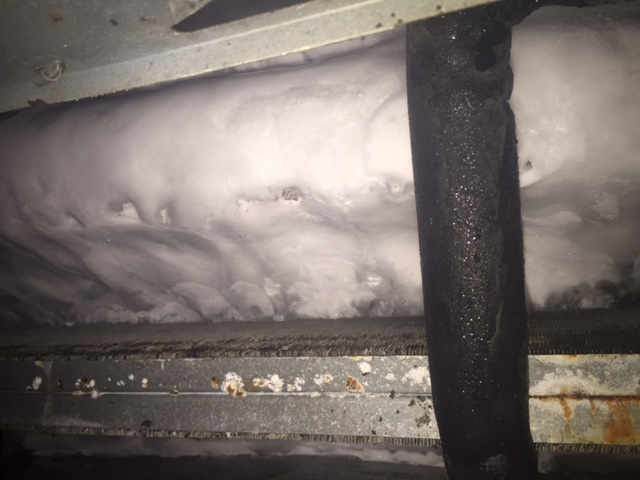Frozen AC Pipe - Causes and Ways to Resolve the Problem
Frozen AC Pipe - Causes and Ways to Resolve the Problem
Blog Article
Almost everyone is bound to have their own individual assumption on the subject of What Causes AC Pipes To Freeze?.

Introduction
Discovering that your a/c pipeline is frozen can be worrying, particularly throughout hot summertime when you depend on your ac system one of the most. Understanding what to do in such a circumstance is crucial to avoid more damage to your cooling system and guarantee your convenience inside.
Comprehending the Causes
Several variables can contribute to the cold of an air conditioner pipe. Recognizing these causes can aid you deal with the concern properly.
Absence of Airflow
One typical source of a frozen a/c pipeline is inadequate air flow. When the air movement over the evaporator coil is limited, it can create the coil to drop below freezing temperature level, leading to ice development on the pipeline.
Low Refrigerant Levels
Inadequate refrigerant levels in your air conditioning system can additionally result in a frozen pipe. Reduced cooling agent degrees can create the stress in the system to go down, causing the freezing of moisture on the evaporator coil.
Winter Conditions
In chillier climates, freezing temperature levels outside can add to the cold of air conditioning pipes. If your air conditioner system is not correctly shielded or if there are leakages in the ductwork, cold air can penetrate the system, causing the pipe to ice up.
Dirty Air Filters
Dirty or stopped up air filters can restrict airflow in your air conditioner system, causing various problems, including an icy pipeline. It's essential to change or cleanse your air filters regularly to make sure proper air movement and avoid ice build-up.
Indicators of a Frozen Air Conditioning Pipe
Identifying the indicators of an icy a/c pipeline is crucial for punctual activity.
Minimized Airflow
If you notice a considerable decrease in air flow from your vents, it could indicate an icy pipe.
Ice Buildup on the Pipe
Noticeable ice build-up on the cooling agent line or the evaporator coil is a clear sign of a frozen AC pipeline.
Unusual Sounds from the Unit
Uncommon sounds, such as hissing or gurgling, coming from your a/c device can signal that there's ice existing on the pipeline.
Immediate Actions to Take
When faced with an icy air conditioning pipe, it's essential to act promptly to stop more damages to your cooling system.
Shutting off the air conditioning
The very first step is to switch off your air conditioning system to stop the system from running and aggravating the concern.
Looking for Blockages
Check the location around the interior device for any type of obstructions that may be obstructing air movement, such as furnishings or curtains.
Thawing the Pipe
You can make use of gentle methods like positioning towels soaked in warm water around the icy pipe to aid thaw it gradually.
Preventive Measures
Taking safety nets can assist avoid future events of a frozen air conditioner pipeline.
When DIY Methods Fail
If your attempts to thaw the pipeline or address other issues are unsuccessful, it's time to call in a specialist.
Importance of Hiring a Professional HVAC Technician
A qualified HVAC specialist has the expertise and tools necessary to identify and fix issues with your air conditioning system securely and effectively.
Routine Maintenance Checks
Arrange normal maintenance talk to a specialist HVAC professional to ensure that your a/c system is running successfully.
Transforming Air Filters
Routinely replace or clean your air filters to prevent airflow restrictions and maintain optimal performance.
Insulating Exposed Pipes
If your air conditioning pipes are exposed to chilly temperatures, consider protecting them to prevent cold throughout winter season.
Seeking Professional Help
If DIY methods fail to settle the concern or if you're uncertain about exactly how to proceed, it's ideal to seek assistance from a certified HVAC service technician.
Conclusion
Managing a frozen AC pipe can be a discouraging experience, however understanding exactly how to respond can aid minimize damage and restore convenience to your home. By understanding the reasons, identifying the indications, and taking punctual activity, you can effectively deal with the concern and prevent future occurrences.
Frozen AC Line: Why It Happens & What To Do About It
A frozen AC line can be a rather peculiar sight in a place like Phoenix, Arizona where nothing ever freezes. In this post, we’ll discuss what makes an air conditioner line frozen – and what you can do about it.
Dirty Air Filters
Did you know that you should be cleaning or replacing your air filters on a monthly basis? Failing to do this can result in airflow issues that, in turn, cause your evaporator coils and lines to freeze over. You’ll notice a buildup of ice on both components, although the buildup on your pipes will, of course, be more evident unless you open your air condition up to reveal the coils.
What To Do About It
Give your air filter a good cleaning if it’s reusable. If not, replace the filter outright. Next, switch your air conditioner’s fan setting on and leave it there for 2-3 hours. This will draw warm air in, helping to thaw your evaporator coil. You can also check out this article for some tips on cleaning the coils themselves if you’d like to speed the process up. Before you switch the unit back to its normal state, make sure the supply vents are completely unobstructed and free of dust or other debris.
If you keep having this issue even after replacing your filters regularly, contact a local HVAC repair company and have them inspect your evaporator coil, ductwork, and any other components that may be at fault. If you live in the Phoenix, Arizona area, give American Home Water and Air a call.
Low Refrigerant Levels/Leakage
What To Do About It
Contrary to what air conditioner “recharge” companies often tell their clients about refrigerant, it should never need to be simply refilled. You see, refrigerant runs in what experts refer to as a “closed loop.” Refrigerant really shouldn’t be leaving that loop. If it is, you’ve got a leak.
Paying someone to come and pump more refrigerant into your system (aka “recharge” it) isn’t the solution. Doing that will simply kick the can down the road. Besides, refrigerant leaks can be harmful to the environment and people in your home.
Rather, you need to take care of the leak with the help of a technician. Check out this article for some more information about dealing with air conditioners that are leaking refrigerant. Before you contact a technician, switch your thermostat to the off position. Then, switch the fan setting on and let it run for 2-3 hours so the unit can thaw.
Improper Temperature Setting
Improper temperature settings can also cause a drop in your air conditioner’s pressure. What many people don’t realize is that air conditioners are actually designed to run when temperatures have fallen above roughly 60 degrees Fahrenheit. If you run the unit when it’s cold outside, you’ll run into many issues, including frozen components.

As a keen reader about Air Conditioner Frozen? How To Fix your Frozen AC Line, I assumed sharing that excerpt was sensible. If you enjoyed our blog entry please make sure you remember to pass it around. We love reading our article about How can I fix an air conditioner’s frozen pipe?.
More Details Report this page